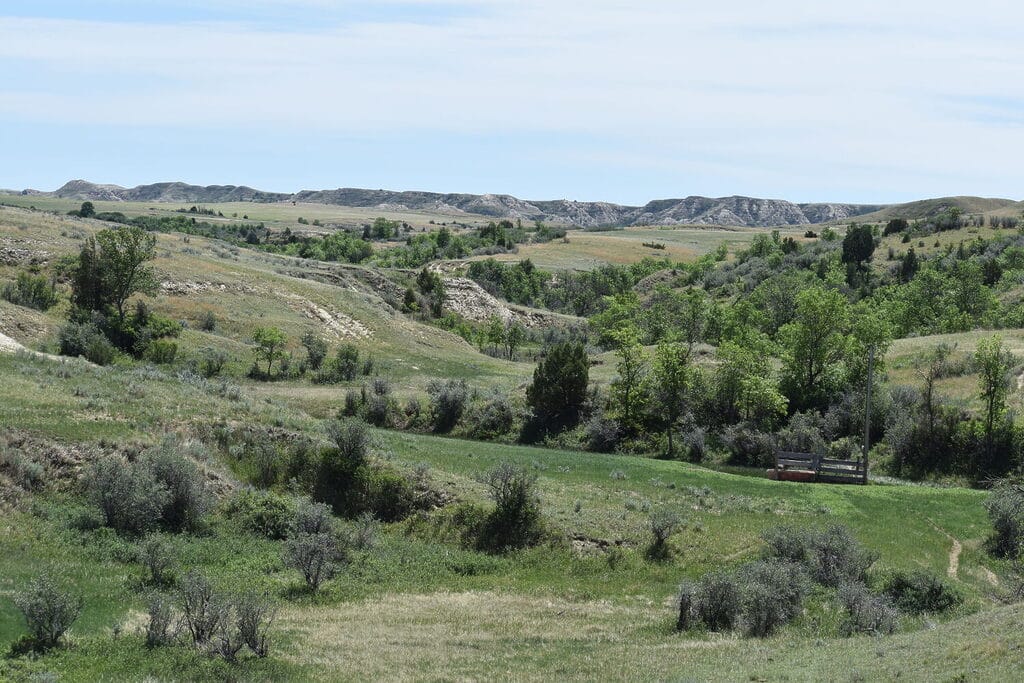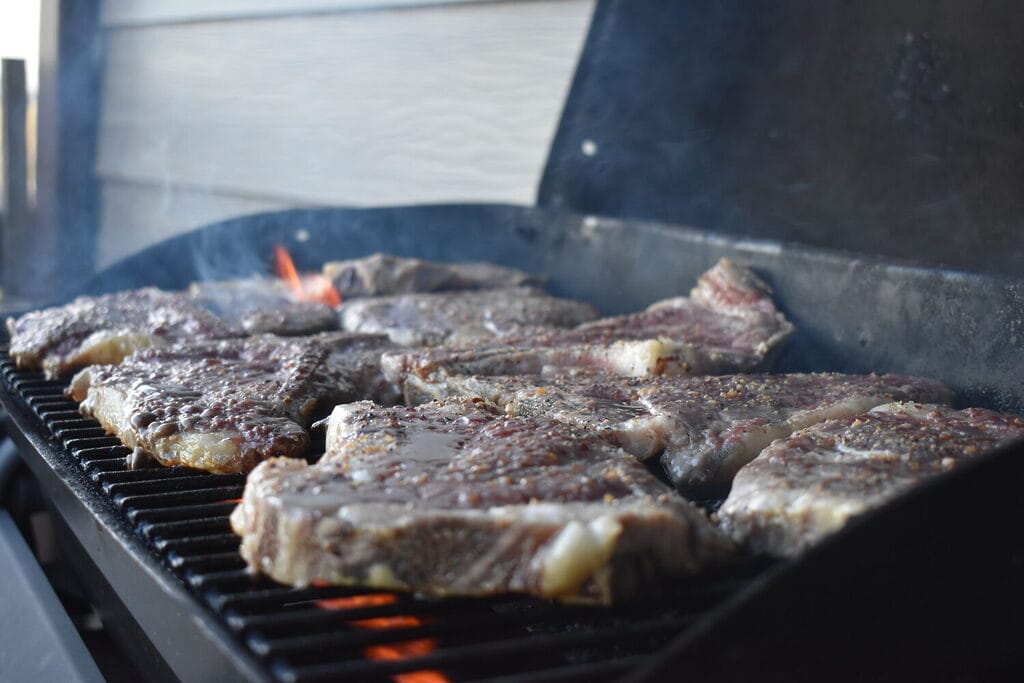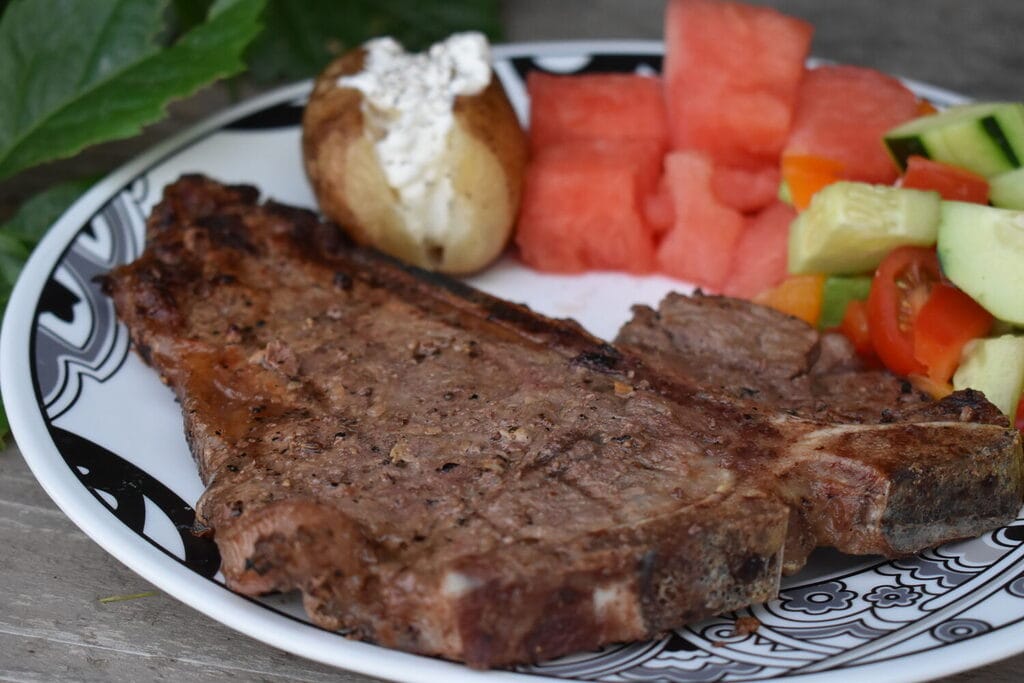Yes, that’s right, the “experts” are telling consumers that no meat is better for our bodies and for the environment, so I tried it! The “experts” are always right aren’t they? As a beef producer and a health-conscious consumer, I wanted to share my thoughts on going meatless and avoiding animal products from the everyday diet. During my short diet, I did not consume any dairy, meat, or egg products; quite different from my typical diet which includes a lot of meat and milk-based products. I do have to admit, my time as a vegan was only for a short period of time many years ago for an assignment in a college class. I am glad I was required to do this assignment though. After going vegan for just this short time, I feel I am more prepared to promote a balanced diet that includes animal proteins. While I consume meat and milk on the daily, I now have a better understanding of what the vegan diet/lifestyle entails and why people might be skeptical about eating animal-based products.
If you are worried about where your food comes from OR how the animals who provided that food are treated OR the impacts on the environment that cows and other animals have, I’m glad! I’m glad you care about where your food comes from. I’m glad you care about how animals are treated. I’m glad you care about how humans are taking care of our planet. I’m glad you care about the climate. I care about these exact same things so I’m glad we have that in common! Now that we’ve established some commonality, let’s discuss animal protein and animal-based products and how they compare to common meat and milk alternatives that are on the market.

Many vegan and vegetarian products are made from soy and soy by-products as soybeans are a versatile food source, high in protein. Soy oil is used for cooking and can also be found in margarine, chocolate, ice cream or baked goods, as well as in cosmetics and soaps. Soy is used in edamame, tofu, tempeh, soy milk, and soy chips, and can be eaten in many ways, including raw, boiled, sprouted, fried, and roasted.
Soy is a great product and I am happy to consume and use as part of my lifestyle. However, I do have some concerns about replacing animal protein strictly with a protein like soy from a health and environmental standpoint. Let’s first look at the environmental implications of producing soy. Because of the increasing demand for soy, forests, savannahs, and grasslands are being converted into farmland. This is concerning as this puts many habitats and species at risk, increases greenhouse gas emissions, and has a high demand for water (1L of soy milk requires about 300L of water), energy, agrochemicals, and soil resources. When any land is changed from it’s natural vegetation or grazing lands to crop land, it often increases soil erosion and changes the natural hydrological cycle. Forests absorb and store vast amounts of carbon dioxide so when there are fewer acres in forests, that carbon dioxide instead gets released into our atmosphere. Add in the mechanized harvesting of soy and the transportation implications (most of the soy consumed in the U.S. is imported from other countries), producing more soy for food and human consumption doesn’t seem to fix our environmental concerns.
What about nutritionally? Soy is after all a complete protein considered one of the richest sources of plant protein and contains all the nine essential amino acids. The recommended intake of protein daily is 10-35% of your daily calories (about 50-175 grams/day on a 2000 calorie diet). Let’s compare a 3-ounce (85g) serving of these meats:
- Chicken breast — 16.5 grams of protein
- Beef tenderloin steak —17 grams of protein
- Ground lamb — 14 grams of protain
- Lean ground beef — 17 grams of protein
- Turkey breast — 20 grams of protein
To a ¾ cup serving (150grams) of soy products:
- Green soybeans (edamame) — 19 grams of protein
- Soybeans, mature — 27 grams of protein
- Soybeans, sprouted — 13 grams of protein
- Firm tofu — 26 grams of protein
Soy naturally has low levels of tryptophan. As an essential amino acid, tryptophan is needed for normal growth in infants and for the production and maintenance of the body’s proteins, muscles, enzymes, and neurotransmitters. Tryptophan is used in the body to help make melatonin and serotonin – helping to regulate the sleep-wake cycle and appetite, sleep, mood, and pain. The body’s liver also uses this amino acid to produce niacin (vitamin B3), which is needed for energy metabolism and DNA production. There must enough iron, riboflavin, and vitamin B6 in the diet for tryptophan in the diet to be changed into niacin. You can find tryptophan naturally in these food items: cheese, chicken, egg whites, fish, milk, sunflower seeds, peanuts, pumpkin seeds, sesame seeds, and turkey. So if your diet relies heavily on soy products, finding another sources of tryptophan may be needed.
Vitamin B12 is essential for healthy blood and nerve cells. It’s also needed in the production of DNA. While vitamin B12 is naturally available in meat, that is not the case in soy products. It is quite common for those who eat a meatless diet to be deficient in B12. The European Journal of Clinical Nutrition published a report in 2014 that showed 86.5% of adults had a Vitamin B deficiency. Higher deficiency rates were noticed in those who were vegans and vegetarians. Symptoms of Vitamin B12 deficiency are fatigue, weight loss, nerve problems, depression, and poor memory. Beef is a terrific source of B vitamins! One grilled flat iron steak (190 grams) provides 467% of the DV for vitamin B12. Additionally, that same amount of beef steak contains B2, B3, and B6 and the high levels of selenium and zinc. There are a lot of options to supplement B vitamins in the diet, but if you are trying to avoid animal products completely, keep in mind that a lot of pills and products are made with animal by products like gelatin capsules.
Vitamin D, necessary for calcium absorption and bone health,is a fat-soluble vitamin found that you won’t find in soy products. Vitamin D mostly comes by consuming milk, yogurt, egg yolks, beef liver, fatty fish, fish liver oils, cheese, and cooked meat. Cooked seafood is one of the highest sources of this vitamin (with the exception of sunshine!). Soy products do not naturally contain any amounts of vitamin D.
Iron is necessary for the production of hemoglobin. Iron is also important for oxygen transport and energy production. There are 2 types of iron: heme and nonheme. Plants contain only nonheme, but red meats contain both. Heme iron is easily absorbed while non-heme iron is absorbed 2-3 times less efficiently. A 3-ounce serving of beef contains 10-25% of your daily iron values and a 3 ounce serving of dark turkey meat contains about 11% of your daily value of iron.
Zinc’s main job is related to the cellular metabolism in your body – protein synthesis, wound healing, and the division of cells as well immunity maintenance. Soy does contain a low level of zinc, but zinc levels in soy are nothing compared to that of red meat. Red meat is the highest source of zinc. A 3.5oz serving of ground beef contains 43.5% of the daily value needed of zinc for men and 59.9% for women.
Plant protein is important to consume as part of your diet to get adequate levels of vitamin C, Isoflavones (soy and soybean is the most concentrated and richest source of flavones), and fiber, as animal proteins don’t supply these nutrients in large amounts.
A common argument I hear is related to the hormones found in beef and other meat vs that of plant proteins (specifically estrogen). First off, any amount of beef, lamb, pork, etc. that you consume will have some level of hormones as hormones are naturally occurring in the body. It is true that a lot of the meat you purchase at the grocery store was implanted with synthetic hormones. Don’t be alarmed though. These added hormones are regulated and monitored at all stages by the U.S. Food and Drug Administration and the Food Safety Inspection Service of the USDA and have proven safe and effective for all involved time and time again. Here is a comparison of estrogen levels:
- A 75g serving of beef from a non-implanted steer contains 1.1ng of estrogen
- A 75g serving from an implanted steer contains 1.9 ng of estrogen
- A 75g serving of chicken contains 2.1 ng of estrogen
- A 3 oz serving of eggs contains 94 units of estrogenic activity
- A 3 oz serving of tofu contains 19,306,004 units of estrogenic activity
- ONE serving of cabbage has the equivalent amount of estrogens to eating over 1000 servings of beef produced using added hormones
- 1 birth control pill contains anywhere from 20,000 – 50,000 ng of estrogen
- A non-pregnant woman produces 513,000 ng everyday
Those who choose to get the majority or all of their protein from soy products, may have some issues with the isoflavones in soy causing a disruption of the estrogen-sensitive systems in their bodies. This includes their reproductive system. Something to consider when eliminating meat from your diet.

Have you tried Beyond Beef’s Plant-based ground? I don’t think I am quite brave enough to try it, but I was curious what it is made from so here is the product label of ingredients:
- Water, pea protein*, expeller-pressed canola oil, refined coconut oil, rice protein, natural flavors, dried yeast, cocoa butter, methylcellulose, contains 1% or less: potato starch, salt, potassium chloride, beet powder color, apple extract, pomegranate concentrate, sunflower lecithin, vinegar, lemon juice concentrate, vitamins and minerals (zinc sulfate, niacinamide [vitamin B3], pyridoxine hydrochloride [vitamin B6], cyanocobalamin [vitamin B12], calcium pantothenate).
I had a steak for supper the other night. Want to know what was on the product label?
- 100% Home grown Beef
Let me ask you this, would you rather consume a nutrition packed food with ONE ingredient or a food with TWENTY-THREE ingredients sourced from who knows where? (Maybe you know, please share if you do!) I know for me, I’d rather eat the real thing with one ingredient. Simpler just seems better….

While producing all types of livestock has impacts on our land and environment, I am going to talk about beef cattle specifically and their environmental impacts. Cattle (and other species like pigs, sheep, and goats) are the most incredible up-cyclers! Almost 90% of what cattle eat cannot be consumed by people. Cattle (and other ruminants) have a digestive system that is so unique that it can take plants and transform them into high-quality and nutrient-rich proteins. They also consume other by-products that would otherwise be wasted like brewer’s grains, beet tops, cottonseed, and potato peelings. This greatly helps to enhance the sustainability of other industries and reduces landfill waste. How cool is that?! Over 44% of an animal’s live weight is processed into other goods besides meat like makeup, medicine, pet food, leather, and so much more. There are hundreds of products that come from a single beef animal.

About 29% of US land is too rocky, steep, arid, and/or wet for cultivation of crops, fruits, and vegetables. Cattle have no problem navigating this type of landscape and can easily convert that land into a high-quality product. Otherwise, that land would lie as a wasteland. When well-managed, grazing is also considerably less disruptive to the landscape – helping to reduce soil erosion, sustain native grasses, birds, and wildlife populations, improve air and water quality, increase plant health and diversity, improves vegetative cover and soil structure, increases water infiltration rate, and serves as a great reservoir for organic carbon. Not only all these things but the manure that the animal lays down the most natural and effective fertilizer around! Cows and other ruminants account for only 4% of all greenhouse gas emissions in the United States. Beef cattle are at only 2%.

We could talk all day about the pros and cons of a vegan diet and the pros and cons of cattle and livestock production. There is tons of research out there to defend both sides of the argument, but in my opinion, eating meat is the most sustainable and nutrient dense food option there is. I am first and foremost a rancher and just like any other farmer or rancher, at the end of the day, we didn’t choose this career because of the money – we chose it because we care about the land. We care about keeping the soils healthy, the atmosphere as clear as possible, the water clean and pure, and the plants healthy. In many cases this land holds family history, stories, memories, and several generations of agriculturists. We were the first conservationists and continue to be. We don’t do this job because it’s easy, or because we make a bunch of money, we do it because we love and care for the land, the lifestyle, the animals, our families, our food, and your food and clothing. So, from one health-conscious consumer to another, here is an open invitation to find a local farmer or rancher and find out what goes in to producing the food you consume. I can speak for most in the agriculture community that we would love to have you visit our operations and answer any questions you may have.
While my vegan lifestyle was short lived, I am curious to know why you choose to be or not be a vegan. Send us a message and let me know!

Gensis 9:2-3
“The fear and dread of you will fall on all the beasts of the earth, and on all the birds in the sky, on every creature that moves along the ground, and on all the fish in the sea; they are given into your hands. Everything that lives and moves about will be food for you. Just as I gave you the green plants, I now give you everything.”
Written by Tienna Canen
Resources:
Vitamin B12 Foods: 12 Great Sources (healthline.com)
https://wwf.panda.org/discover/our_focus/food_practice/sustainable_production/soy/
https://www.foodunfolded.com/article/is-soy-bad-for-the-environment
R.5e9a7f5193dfbda08b98358c0c4ef967 (734×670) (bing.com)
https://www.livestrong.com/article/240951-soy-protein-vs-meat-protein/
Vegan Ground Beef | Plant-Based Ground Beef | Beyond Meat
Upcycling (beefitswhatsfordinner.com)
Cows and climate change | UC Davis
Grazing Cattle and Climate Change – Climate Nexus
Cattle grazing is critical for a healthy ecosystem (beefmagazine.com)
Environmental Benefits of Improved Grazing Management – Pasture (illinois.edu)
https://ods.od.nih.gov/factsheets/VitaminD-HealthProfessional/
10 Best Foods That Are High in Zinc: Meat, Chocolate, and More (healthline.com)

